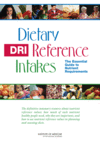
The prosperity of the United States relies on families that support one another throughout all stages of life. However, systematic issues and complex interpersonal relationships hinder many families’ ability to thrive. While scientific evidence demonstrates the importance of a supportive family environment on individual health outcomes and well-being, this knowledge is often not appropriately applied to policy or practice.
Building supportive families begins with eliminating systematic inequities in adolescence and promoting positive childhood experiences and relationships. Children are highly sensitive to their surroundings and interactions, and their healthy development relies on open communication and stability at home. Working adults also rely on their families to support them as they fulfill their responsibilities and navigate obstacles both inside and outside of the home. This is especially apparent in military families, who face additional complex challenges due to military life. However, the current system for fostering positive family relationships in difficult situations is limited and fails to provide all families with adequate support and tools for success.
As we age, family support becomes even more critical. In 2011, the Congressional Budget Office estimated that the value of family caregiver services to older adults was $234 billion, and that number is increasing as more adults reach older ages. As the role of family caregivers grows increasingly complex and demanding, it is imperative that caregivers receive the support they need to manage the needs of their aging family members. The United States health care system must advance from person-centered care to person and family-centered care in order to provide comprehensive support.
The United States government has a responsibility to ensure that its family programs reach those who need it the most. The education, health care, child welfare, and justice systems, and systems within the Department of Defense, must recognize the growing diversity of families and create adaptable programs that are equipped to support all families in need. Furthermore, these systems must leverage scientific evidence that reveals the multitude of factors that influence outcomes throughout all stages of life and apply that knowledge to programs and policy.
Parenting Matters: Supporting Parents of Children Ages 0-8
Decades of research have demonstrated that the parent-child dyad and the environment of the family—which includes all primary caregivers—are at the foundation of children’s well- being and healthy development. From birth, children are …
The Promise of Adolescence: Realizing Opportunity for All Youth
Adolescence—beginning with the onset of puberty and ending in the mid-20s—is a critical period of development during which key areas of the brain mature and develop. These changes in brain structure, function, and connectivity mark …
Strengthening the Military Family Readiness System for a Changing American Society
The U.S. military has been continuously engaged in foreign conflicts for over two decades. The strains that these deployments, the associated increases in operational tempo, and the general challenges of military life affect not only service …
Families Caring for an Aging America
Family caregiving affects millions of Americans every day, in all walks of life. At least 17.7 million individuals in the United States are caregivers of an older adult with a health or functional limitation. The nation’s family caregivers …













 This year marks the 10th anniversary of our influential book, Retooling for an Aging America: Building the Health Care Workforce. It called for bold initiatives to train all health care providers in the basics of geriatric care and to prepare family members and other informal caregivers, who might receive little or no training in how to tend to their aging loved ones. Retooling for an Aging America and our other publications remain essential resources for the care of our aging population.
This year marks the 10th anniversary of our influential book, Retooling for an Aging America: Building the Health Care Workforce. It called for bold initiatives to train all health care providers in the basics of geriatric care and to prepare family members and other informal caregivers, who might receive little or no training in how to tend to their aging loved ones. Retooling for an Aging America and our other publications remain essential resources for the care of our aging population.







































